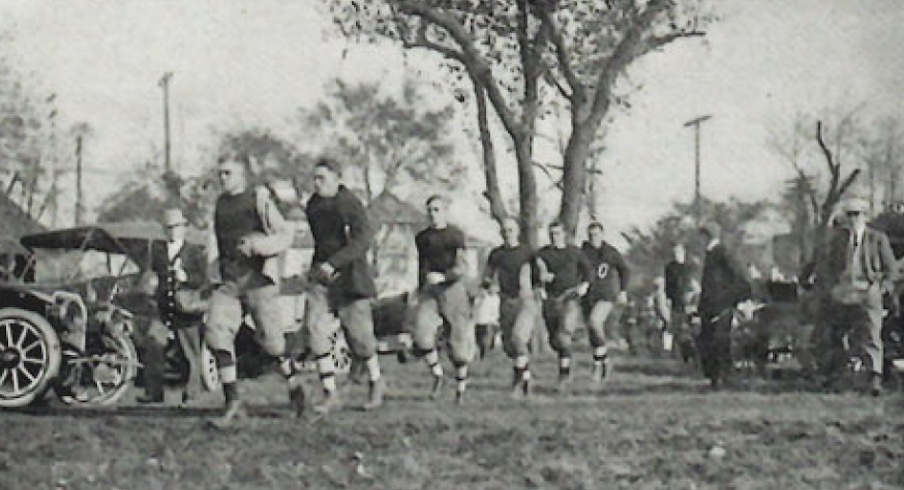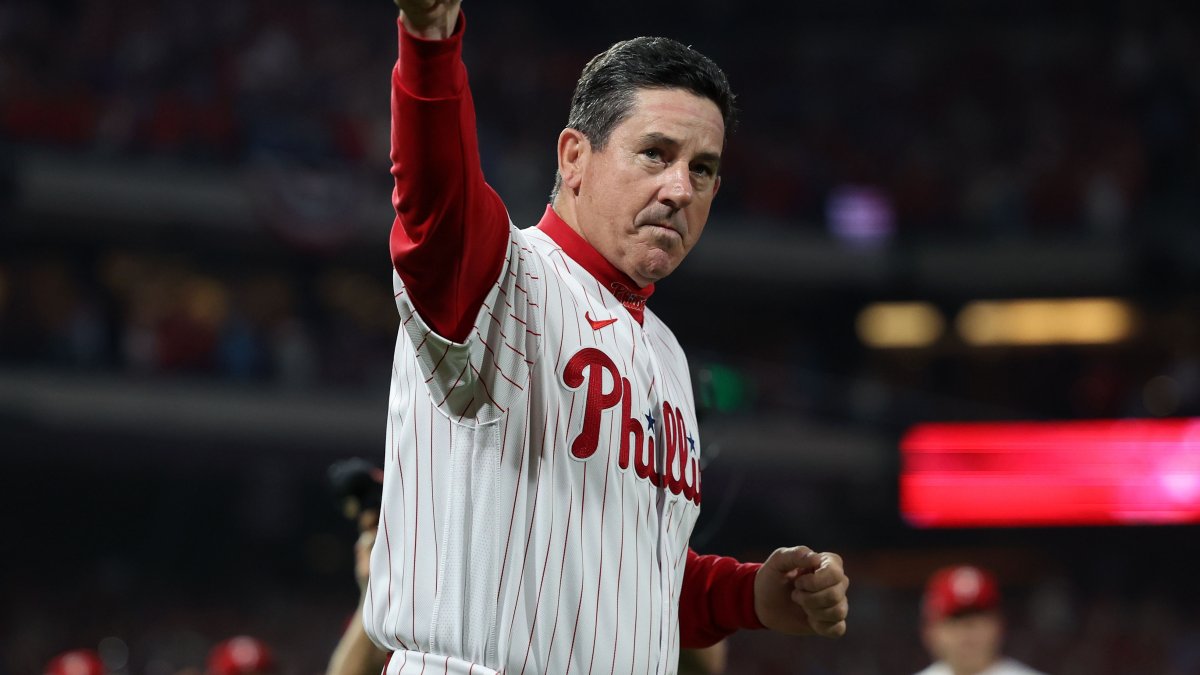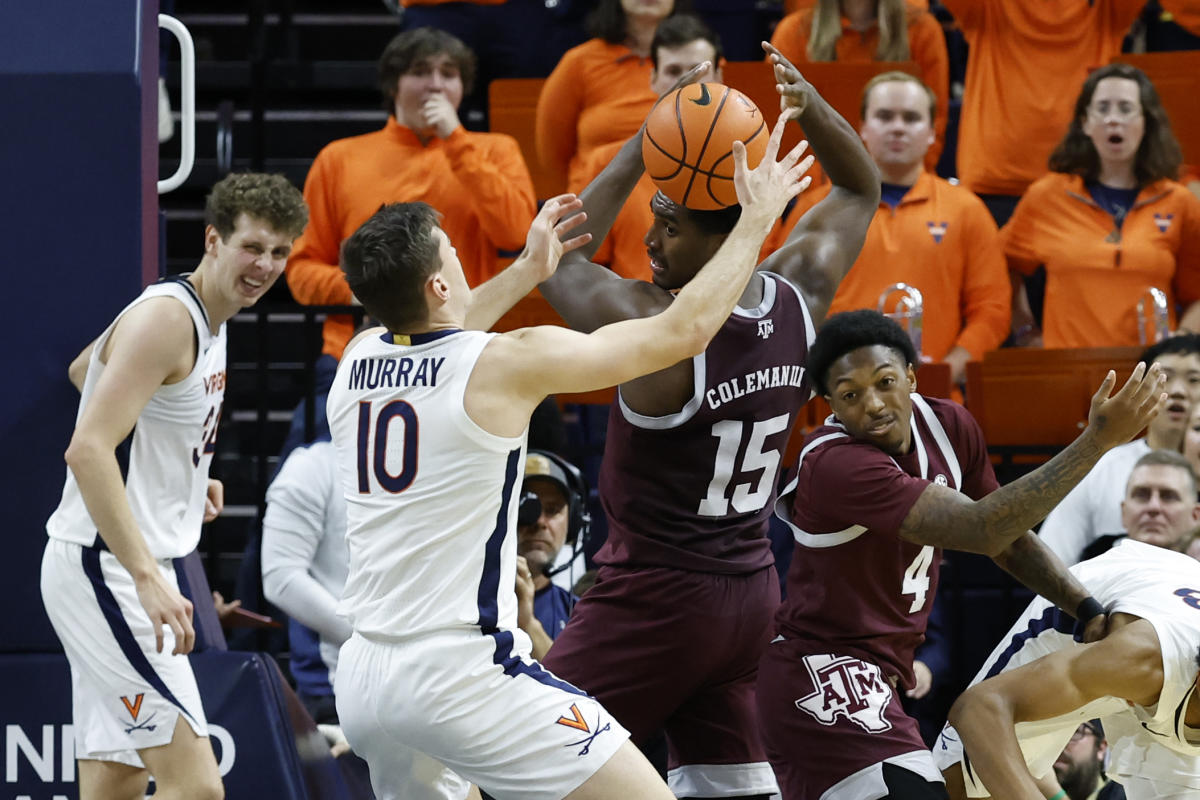“It is safe to say that the teams will never meet again.” – Columbus Sunday Dispatch (November 17, 1912)
The first gridiron encounter between Penn State and Ohio State on November 16, 1912 was a chaotic spectacle that diverged from a typical college football game. Rather than a genteel contest, it resembled an MTV Celebrity Deathmatch in its intensity and aggression.
The game took place on Ohio Field, and the official score resulted in a narrow 1-0 victory for the Nittany Lions. This singular point was obtained due to a decision made by Ohio State’s coach, John R. Richards, who chose to remove his team from the field with 9:06 remaining in the fourth quarter. The reason behind this uncommon move was to ensure the safety of his players by sparing them from unnecessary injury and roughness, as they were already trailing 37-0.
During the early 20th century, Ohio State primarily competed against other Ohio schools, with Michigan being the notable exception. Consequently, sports editors seldom referred to OSU as the Buckeyes during that time. In fact, in 1912, the Columbus Dispatch labeled both the Mount Union and Denison football teams as the Buckeyes, but not Ohio State.
However, after facing mounting pressure to schedule games against more formidable opponents from outside the state, the Scarlet and Gray gradually began to venture beyond Ohio’s borders. The 1912 schedule included matches against Michigan, Penn State, and their first-ever game against Michigan Agricultural College (Michigan State). This marked the beginning of Ohio State’s involvement in the Western Conference, which eventually evolved into the Big Ten. In 1913, they commenced their participation in a Western Conference schedule.
On the other hand, Penn State primarily faced schools from the Keystone State, but they also competed against strong out-of-state programs such as Cornell and Colgate. In the early 20th century, Eastern football was considered the standard in college football, and Penn State actively participated in this competitive landscape. The Scarlet and Gray, however, had only experienced the challenging nature of Eastern football through a 0-23 loss against the renowned Carlisle Indians in 1904 and a 0-6 defeat against Syracuse in 1911.
John R. Richards, an alumnus of Wisconsin, was hired as Ohio State’s athletic director and football coach to prepare the university for their transition into the prestigious Big Ten Conference.
Prior to the PSU game, Richards’ team boasted a 5-1 record, achieving impressive victories against Otterbein, Denison, Cincinnati, Case, and Oberlin. Their only loss came against Michigan, with a score of 14-0. Although several players on the roster were considered among the greatest Scarlet and Gray athletes, their names, despite memorable nicknames, have faded from the collective memory. Notable members of the team included Tackle Arthur “Bugs” Raymond, Guard Irving “Geissy” Geissman, Halfback Maurice “Windy” Briggs, Fullback Campbell “Honus” Graf, and End Boyd “Smash” Cherry, who became the university’s first All-American player.

Ohio State’s 1912 football team.
Penn State’s coach, Bill Hollenback, was a former All-American fullback at Penn. Before Hollenback’s arrival, the Nittany Lions were not considered an elite Eastern program. However, under his leadership, they thrived and posted an impressive 18-2-4 record during his first three seasons. By the time the 1912 squad arrived in Columbus, they had a perfect 6-0 record and had only conceded six points. Three members of their roster, fullback James “Pete” Mauthe, end Dexter Very, and quarterback Eugene “Shorty” Miller, would later be inducted into the College Football Hall of Fame.
According to various accounts, Hollenback believed that his team was being disrespected by the Columbus media. To motivate his players, he incorporated press clippings into his pregame speech that allegedly belittled the Nittany Lions.
Various sources provide different explanations for the origin of the intense confrontation that unfolded during the game. According to a snippet in the October 1956 issue of the Ohio State Monthly magazine, trouble erupted due to a comment made by the diminutive Lion play-caller, “Shorty” Miller, to Ohio State fan favorite, “Bugs” Raymond. Miller, standing at only 5’5″ and weighing 145 pounds, reportedly quipped to Raymond, “Well Mr. Pride of Ohio, Mr. Mauthe is coming right through you.” On the subsequent play, Miller orchestrated a play that propelled “Pete” Mauthe through Raymond, leading to a touchdown.
“According to legend … ‘Shorty’ Miller, the diminutive Lion play-caller, walked up to the big guard and said, ‘Well, Mr. Pride of Ohio, Mr. Mauthe is coming right through you.’ On the next play, Miller sent ‘Pete’ Mauthe… crashing into Raymond, and he went all the way to paydirt.”
From that point on, the game devolved into what the Dispatch described as “hand-to-hand combat.” The Lantern, a university publication, attributed the issue to the umpire, Clark F. Hinman. The publication argued that had Hinman properly carried out his duties by promptly expelling troublemakers from the game, the subsequent “little fights” resulting from the bad blood between the teams could have been avoided. Hinman, distraught by the criticism he received, responded to his detractors in a letter to the Dispatch.
While Penn State and their coach insisted that the intensity of the game was common in hard-nosed Eastern football, Ohio State’s backup center, Earl Maxwell, painted a picture of a more combative affair. Maxwell played the second half of the game with a broken nose and described the contest as having “awful” slugging in the middle of the Penn State line. He specifically mentioned Guard James Bebout playing opposite him, relentlessly targeting his damaged nose on every play, while also resorting to foul language. Maxwell deemed it to be the roughest game he had ever participated in.
Richards faced significant backlash for withdrawing his team, but he defended his decision, citing player safety as his primary concern. He explained to reporters after the game that it would be necessary to teach his team pugilism if they wanted any chance of winning games played under such tactics.
In an op-ed published in The Lantern under the headline “SPORTSMANSHIP VS. MUCKERISM WAS CONTEST,” Richards justified his actions and briefly discussed the importance of upholding standards of sportsmanship and educational and ethical ideals. He then launched a stern critique against gamblers, labeling the gambling industry as “one of the worst enemies of clean sport.” The official score of 1-0 caused discontent among factions of the gambling community who failed to collect their wagers due to the unexpected outcome.
One of the most disgraceful moments of the afternoon for Ohio State officials occurred when a freshman student set fire to white and navy bunting that had been placed on one of the goalposts as a welcoming gesture to the Penn State team. Ohio State administrators were especially upset because among the guests in the PSU entourage was Penn State’s president, Edward E. Sparks, who happened to be an Ohio State alumnus. As a result, a committee representing Ohio State formally apologized to Sparks at his hotel that evening, and the freshman responsible for the incident was ordered to personally apologize to Sparks at Union Station.
Ohio State finished the season with a 6-3 record, and Richards abruptly resigned. Lynn St. John was promoted to replace Richards as athletic director, and John Wilce was hired as the new head football coach.
Ohio State and Penn State did not meet on the gridiron again until 1956, a hiatus of 44 years.
You can learn more about the early years of Ohio State football in the author’s book “Days of Yore: The Men of Scarlet and Gray,” which is available for purchase on Amazon. You can follow McQuigg on Twitter @dpmcquigg.





:no_upscale()/cdn.vox-cdn.com/uploads/chorus_image/image/72931262/usa_today_21973134.0.jpg)


